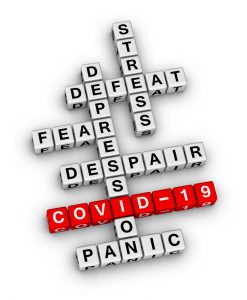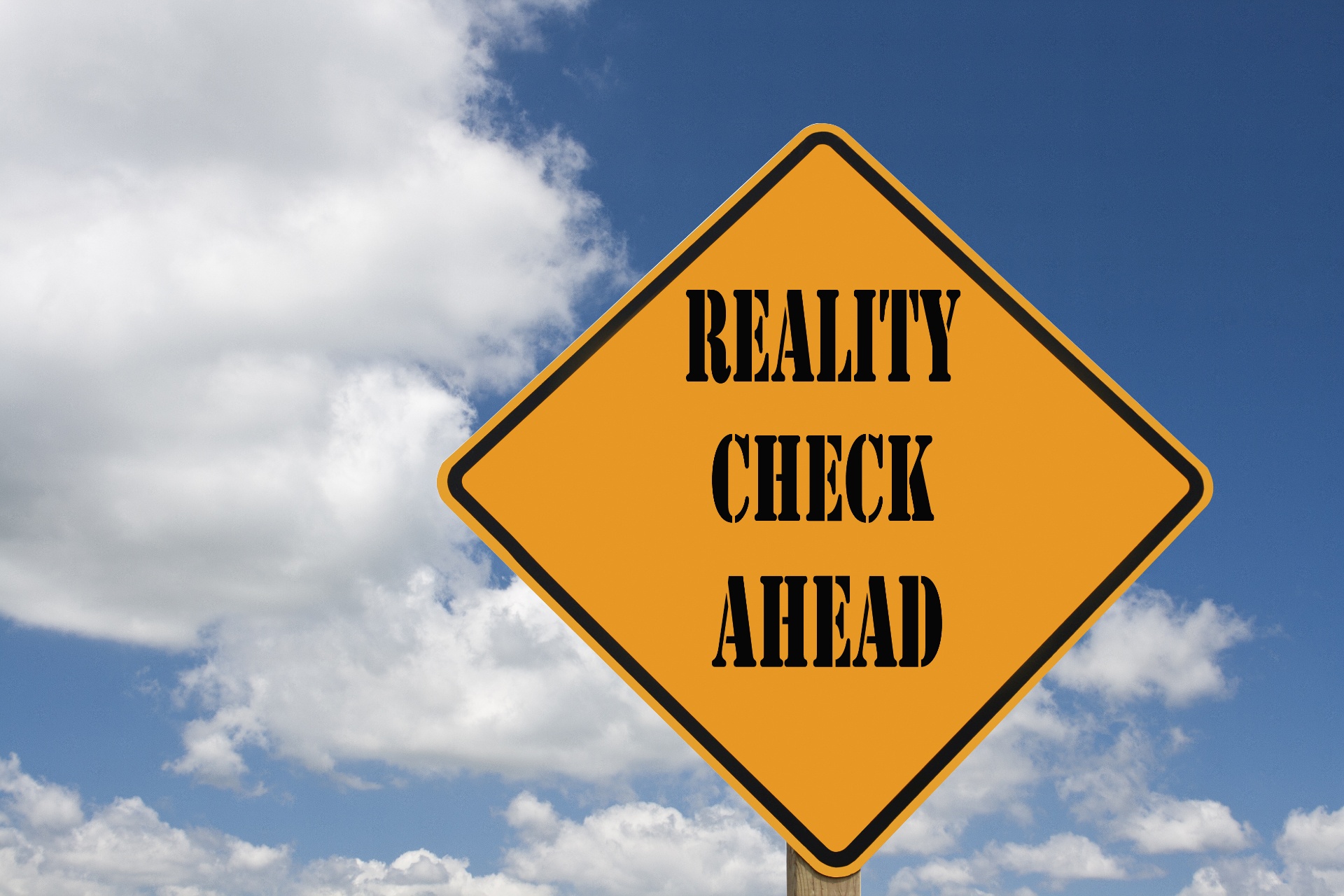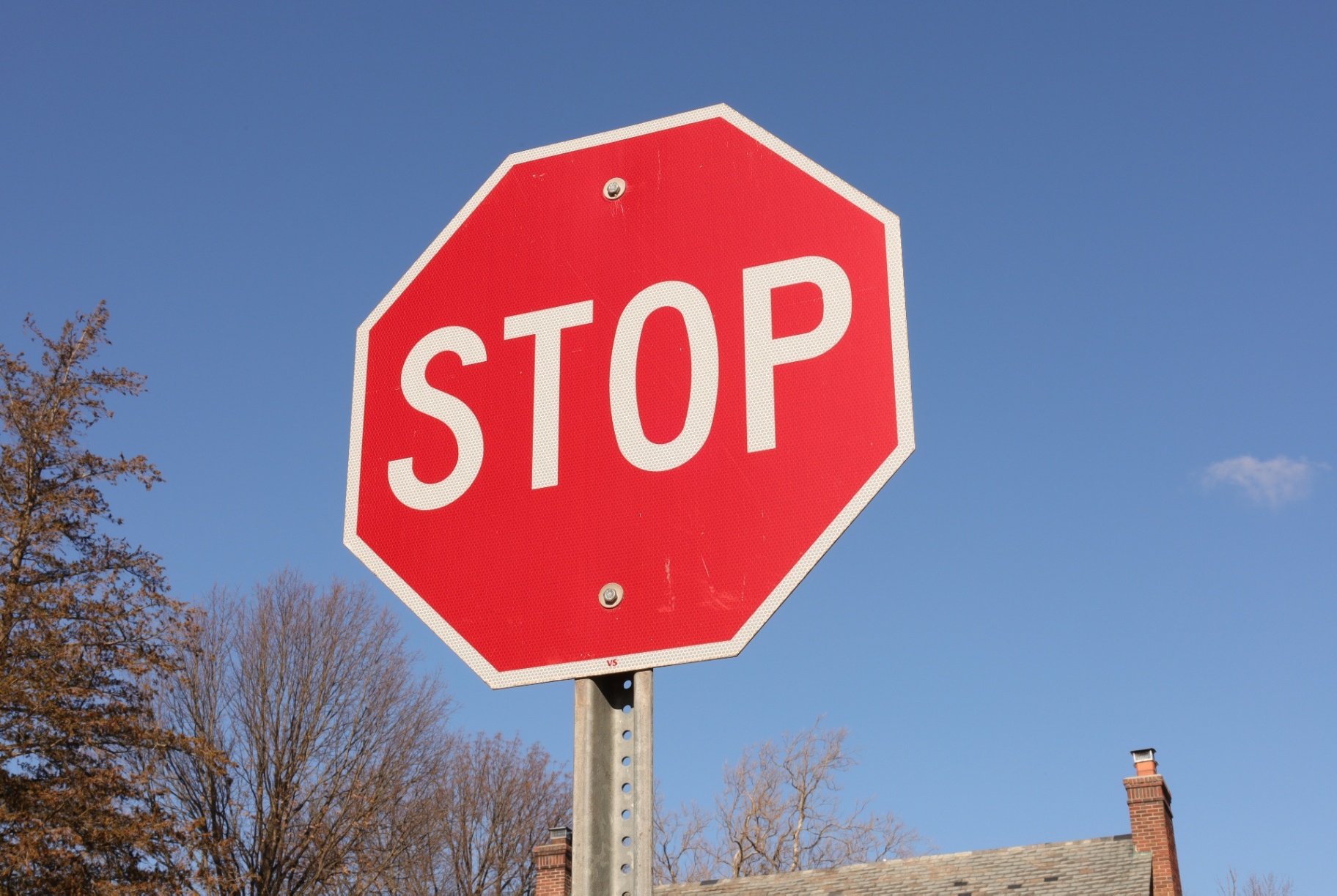EMOTIONS AS IMPORTANT ALLIES DURING COVID-19

“Emotions are action-requiring neurological programs” ~ Antonio Damasio
As a therapist, I’ve been sitting on the front lines of what feels like a slow-motion mass trauma-in-progress since February as we began seeing changes the COVID-19 pandemic is creating in our every-day lives here in the US. I have been talking with clients about how they may collaborate with their emotions to help them through this crisis, based on the work of Karla McLaren (2010, 2013, 2020). I see all of our emotions on deck right now trying to do their part to help us navigate the ever-changing terrain of COVID-19 (but I am only going to focus on 7 here). While they may seem overwhelming to folks in the best of times (not to mention during a crisis), emotions are our ever-present allies. We just need to know how to work with them.
Panic
Whenever panic is in the mix, I work with that first before tending to the other emotions because doing the work it poses helps a person return to their window of tolerance and, from there, have access to a broader view of themselves, their situation, and the resources available to them in the present moment. (To read an introduction to this emotion as well as other emotions in the fear family, check out this article).
There are two forms of panic I generally talk about as a trauma therapist:
1) Clear and present danger (I use a saber-toothed tiger figure to represent this in sessions) which helps us access life-saving fight/flight/freeze responses.
2) Post-trauma stress response (I use a Medicine Man figure to represent this in sessions) which helps us tend to situations that, though triggered in the present, actually have their roots in the past.
Unlike most of the trauma I have talked about thus far in my career, COVID-19 legitimately feels like a saber-toothed tiger rustling around in the near distance to some (for example: the potential of job-loss or the possibility of contracting the disease), and to others like it has already pounced (for example: housing loss or contracting the disease).

Finances, physical resources, safe housing, and health all contribute to survival. Fight/flight/freeze are not going to help us with COVID-19, however. We need access to our higher-level thinking to navigate these particular waters.
So I have been turning, with my clients, to the Medicine Man who poses these three questions: 1) “What is the trigger?” 2) “What does this remind you of?” and 3) “What healing action(s) need to happen?” (McLaren, 2010, p. 281). A lot of things could happen (including avoidance and hyper-vigilance) but which one(s) of them would actually be healing?

When I’ve asked these questions to clients in the last few weeks, the answers to the first question are very similar: they are experiencing a threat (or potential threat) to finances, physical resources, housing, and health, both in the short- and long-term.
The answers to the second question have varied widely. For some, this brings up old related traumas that were there long before COVID-19 (for example: having no one else to rely upon, not having adequate resources, or not feeling physically safe). For others, this is a unique experience with no pre-existing related trauma that they can recall.
The answers to the third question also vary widely. Finding the right answer helps a person be in the present moment to tend to the other emotions on the scene. Oftentimes, the healing action required is the work of another emotion. I am finding that the work of fear, anxiety, depression, confusion, and (most especially) grief are frequently popping up right now as healing actions for panic.
Fear
Fear helps us orient to novelty and change in the present (you can read more about it here). There is a LOT of novelty and change happening every day right now as this virus sweeps through our communities and the economic impacts of public safety efforts are being felt in our daily lives. I use a bunny rabbit figure to represent the work of fear in sessions. Imagine a bunny rabbit in the woods. He hears a twig snap nearby and pops his head up.

He’s not in flight or freeze in that moment but, rather, he is orienting to that sound: “Is that a sound I want to go investigate? Do I want to put some distance between me and whatever made that sound? Or is that a neutral sound and I can go back to nibbling my piece of grass?” Fear is the emotion that helps us sort through the possibilities and arrive upon the one appropriate for this particular situation in this particular moment. After orienting to the scene, it asks a simple “What action should be taken?” (McLaren, 2010, p. 235).
Fear is important in daily life even when there isn’t a crisis. It helps us look around and assess a new situation. It helps us pay attention to our surroundings, notice when there are changes, and adapt as needed. We need it even more in a situation that is rapidly evolving. Invite it in to do its job rather than exile it because it feels so distressing. It feels distressing until you answer and act upon the question it poses. Then the intensity recedes. It doesn’t want to overwhelm you; it wants to orient you to the evolving situation you are in and prompt you to act on the data you have available to you at this moment in time.
Anxiety
Anxiety, first and foremost, is the emotion most concerned with orienting us to future needs and task completion (you can read more about it here). Think of it as a border collie who needs to get a flock of sheep from the pasture to the pen by the end of the day.

It keeps an eye on all the moving parts involved as it herds the flock towards that goal, course correcting along the way as new challenges are variously introduced and resolved. If fear’s question is a straight-forward “What action should be taken?” anxiety’s question is “What really needs to happen?” (McLaren, 2013). As with panic, a lot of things could happen (including avoidance and over-thinking the issue), but what really needs to happen in order to help us get to our desired goal? Answering this question helps us cut through the whirlwind of “what ifs” and self-doubts to focus us on what the priorities are for getting us to where we want to go.
Anxiety is also important in daily life even when there isn’t a crisis. It motivates us (and gives us the energy) to do what we need to do now to contribute to the future we wish to build for ourselves. The current COVID-19 crisis poses two broad challenges for anxiety: 1) the regular one of “what do I need to do now to get my needs met in the future?” and a new one for some: “how do I prepare for the future when I don’t yet know what I will have available along the way?”
For the first challenge COVID-19 poses (“how do I get my needs met?”) use the question anxiety poses to cut through the whirlwind of possibilities so you can get to the action that really needs to happen. For example, if what really needs to happen is that you need to make sure someone in your household has access to medicine, do what needs to be done to secure that. If what really needs to happen is to make sure there is enough food in the household to last a couple weeks to a couple of months, do what needs to be done to secure that. If you don’t have the ability to secure those things, then what really needs to happen is to find out who can help you secure those things. Anxiety is usually pretty straight forward and practical (if not easy) once you have the clarity its question and answer provide.
For the second challenge COVID-19 poses (“how do I prepare for the future when I don’t yet know what I will have available along the way?”), I find that what really needs to happen is the work of various other emotions. A good place to start is with depression.
Depression
Depression is the emotion most concerned with keeping us tethered to reality (you can read more about it here). In cases of clinical depression, I use the image of a circuit breaker to describe its task (McLaren, 2010, p. 334). While it may be inconvenient (the lights are out), it is also protecting the major appliances (i.e. our system) from burnout. When we blow past other emotions and warning signs, depression takes away our power in order to slow us down in the hopes of bringing attention to what is no longer sustainable.
In this current crisis, however, I’m thinking of it more as a highway sign:
 Which may need to escalate to:
Which may need to escalate to:
 Or even this to get your attention:
Or even this to get your attention:
 Pro tip: don’t wait until it gets intense to attend to it. It is here to help. Collaborate with it. What is the reality of your situation? What resources do you need? Who do you need to reach out to for assistance? What is wheat and what is chaff in the current situation? Let depression help you winnow that down.
Pro tip: don’t wait until it gets intense to attend to it. It is here to help. Collaborate with it. What is the reality of your situation? What resources do you need? Who do you need to reach out to for assistance? What is wheat and what is chaff in the current situation? Let depression help you winnow that down.
I use different questions for depression than the ones posed by McLaren. These different questions were suggested by Melina Larkin, LCSW (one of the clinicians who works here at Brave Acorn) and I have found them very useful:
- “What sucks?”
- “What am I ignoring?”
Depression tethers us to the reality of our current situation in the hopes that we will tend to what we see there. If we can do this on a regular basis, depression may never be felt more than as a passing breeze. If we regularly avoid and ignore it, however, it has to get intense enough to get our attention (and keep going until we attend to what needs our tending). Do yourself a favor and work with it in its softer states.
Confusion
Confusion is a good buddy to anxiety. It helps bring attention to discrepancies in our thinking and/or actions (you can read more about it here). In the case of conflicting information, it helps clarify things for us by asking “What is my intention?” (McLaren, 2010, p. 257). In posing this question, it helps us identify what course corrections need to take place.
If, for example, you are used to spending time with family and friends who do not live in your house, stay-in-place restrictions are going to feel very confusing. If your intention is to assist in the public health efforts of your community, that intention helps interrupt your automatic pilot for meeting people in person in order to introduce new ways to connect which are remote or accommodate having at least 6 feet of distances between you at all times. If your intention, however, is to be with someone in particular during this troubling time, it helps you re-calibrate your actions to figure out how to be in quarantine with that person rather than separated in two different locations.
A harder task for confusion right now is to reconcile the things that we don’t yet have an answer for (for example, things that we don’t yet have an alternate way to address or things that rely on a known future to determine). That is where grief comes in.
Grief
Grief is the emotion that we associate with loss. It is also the emotion that connects us to what is precious (you can read about it here). Because most of us are used to pushing it away at all costs, I am finding I need to make a case for actually inviting it in to help during this time of crisis. There are two aspects to grief that are relevant here: anticipatory grief, and the grief experienced after a loss occurs.
The story I tell to illustrate the work of anticipatory grief is one I heard long ago (but can no longer find to credit). A student asks his teacher what could possibly be good about death. The teacher points to a pitcher and says, “One day I will bump into that pitcher by accident and it will fall and break. Right now, however, it is whole. I enjoy and appreciate it more today, knowing that it might be gone tomorrow.” Grief helps us let go of what is gone, but it also connects us with what is precious, both before and after the loss.
The example I usually use here is the death of a pet. When my pug Ozzy used to pee in the house, I was understandably frustrated with him. At the same time, I was also aware that there was going to be a time when I would look back on his messes and wish he was still around for me to clean up after. That helped me stay connected to the preciousness of his presence in my life, no matter the frustrations his presence sometime also posed.

After anticipatory grief, of course, comes the actual loss, which reveals even more preciousness. Once Ozzy actually died and the loss of his presence was no longer imagined but real, a new level of preciousness was uncovered when I realized how much I missed touching him. I knew I enjoyed cuddling with him before he died, but I didn’t realize how much until he was gone. That helped me make some changes that connect me with what is really important to me in life now.
When working with clients, I use different questions than McLaren does for grief. I ask:
- “What do you miss about who has died?” (or “about who/what is gone forever?”)
- “That is what is precious to you about them. You get to keep that, even though they are gone. Their loss highlights for you what is important and you get to make choices about what you do with that going forward.”
- “Now, look around at the life you currently have. With these new eyes that this loss gives you, what about your current life is precious to you?”
In addition to making room for the waves of tears and heartbreak that are an inevitable part of this emotion, we find ways to honor who/what is lost by connecting to what is precious. We apply anticipatory grief to that which is around us right now that we still have access to. We stop taking so many things for granted. Grief is the skill of letting go of something that is ended forever and keeping our heart open to life in the process.
This is an essential skill amidst the challenges that COVID-19 presents. When I suggest that people invite it in as a valued guest, I get various levels of push back (sometimes just in the person’s physical response, sometimes verbally too). There is already so much uncertainty and pain on people’s plates right now, why invite in more pain?
Because emotions are not the source of the pain.
They are here to help us move through the pain.
Mary O’Malley has a great book entitled “What’s in the Way, IS the Way” (2016). I love that title and, in my estimation, it absolutely applies to the pain we associate with emotions. Emotions aren’t the cause of pain; the situations we are in are the cause of pain. Emotions have specific ways to help us process and move through the pain those situations evoke. When we exile the emotions, we separate ourselves from the energy and information necessary to process and move through the pain.
COVID-19 brings a myriad of losses into our lives. Not only is life as we know it over (with no guarantee of if/when/how it will return), but our plans for the future are over too (I was doing things today in anticipation of them being a certain way tomorrow, next week, next month, next year, and at retirement; now there is no guarantee I will ever be able to return to those plans). So, go through the steps:
- “What do you miss about your life before COVID-19?”
Before moving on to the next step, take as much time as you need to actually answer this question. Don’t let it be just an intellectual exercise; feel into it viscerally before moving on. Grief takes time. Honor its depths. Do this with another person, in a journal, creatively, whatever helps you get in touch with it in your body.
- “That is what is precious to you about your life that you may have taken for granted before now. You get to keep that, even though your old life is gone and we don’t know what’s ahead. This loss highlights for you what is important and you get to make choices about what you do with that going forward.”
- “Now, look around the life you currently have. With these new eyes that the loss of your pre-COVID life gives you, what about your current life is precious to you?”
Allow grief to keep you connected with that. Don’t take it for granted. Savor it. Honor it. Give thanks for it. Share it with others. Grief is an exquisitely beautiful emotion. Invite it into your life to help you navigate your journey’s many losses.

A Note on the Dance between Anxiety and Grief
When I write (or talk) about emotions, it sounds as if they come in singles. The truth is, they are interacting with one another (in pairs and multiples) all the time; it’s just a function of language that forces me to write/talk about them one at a time. I mention this because there is an important dance going on between anxiety and grief during the COVID-19 crisis that we need to help facilitate. If we get too far immersed in anxiety, we will be continually focused on what needs to happen in order to secure our future (which could end up looking like distracting through productivity). If we get too far immersed in grief, we will be continually focused on loss and what is precious (which could end up looking like collapse or spiritual bypassing). The dance between these two, however, is a healthier place to be. There is a lot to do, let anxiety do what it needs to do. But then also give it a break by inviting grief in: let go of what is gone and connect with what is precious. Both are important daily tasks right now.
The Suicidal Urge
The Suicidal Urge is an overwhelming emotion for most, but (just like all of our other emotions) it is here to help us do very important work. It has an eye on what needs to end (die if you will) so that we may live (you can read about it here). I will not go into individual expressions of suicide here because, for me, the collective is looming so large in our current crisis. What needs to die so that we (vulnerable populations and planet included) may live? I find it curious that we as humans are battling a disease that attacks our lungs and (as we collectively slow the pace of life to accommodate public health concerns) the planet’s skies are clearing as if it is breathing freely for the first time in ages.
“Historically, pandemics have forced humans to break with the past and imagine their world anew. This one is no different. It is a portal, a gateway between one world and the next. We can choose to walk through it, dragging the carcasses of our prejudice and hatred, our avarice, our data banks and dead ideas, our dead rivers and smoky skies behind us. Or we can walk through lightly, with little luggage, ready to imagine another world. And ready to fight for it.” ~ Arundhati Roy
- Damasio, A. (2010). Self comes to mind: Constructing the conscious brain. New York, NY: Pantheon.
- McLaren, K. (2010). The language of emotions: What your feelings are trying to tell you. Boulder, CO: Sounds True.
- McLaren, K. (2013). The art of empathy: A complete guide to life’s most essential skill. Boulder, CO: Sounds True.
- McLaren, K. (2020). Embracing anxiety: How to access the genius of this vital emotion. Boulder, CO: Sounds True.

